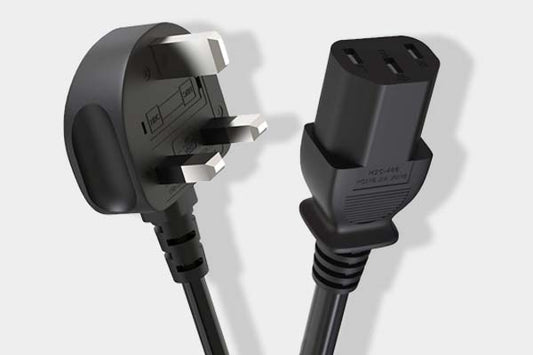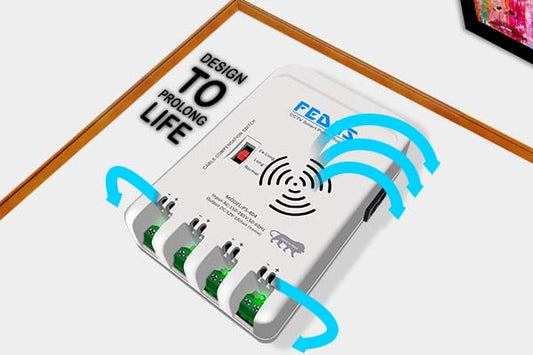Exploring the Evolution: How Apple's Charging Technology Has Changed Over the Years
Apple has long been a pioneer in innovation, consistently reshaping the technology landscape. One area where this is particularly evident is its charging technology. Over the years, Apple has moved from the iconic 30-pin connector to the sleek Lightning cable, and now to USB-C. This evolution isn’t just about keeping up with trends—it reflects Apple’s commitment to innovation, user convenience, and environmental sustainability.
Let’s explore how Apple’s charging technology has evolved over the years and the impact of these changes on users and the planet.
The Era of the 30-Pin Connector (2003–2012)
The 30-pin connector, introduced in 2003 with the iPod, was Apple’s first universal charging and data transfer solution. It was widely used across the iPod, early iPhones, and iPads, establishing a robust ecosystem for accessories.
Key Features of the 30-Pin Connector
- Wide Compatibility: Enabled charging, data transfer, and accessory connections for most Apple devices.
- Accessory Ecosystem: Supported docking stations, car audio systems, and external speakers.
- Design Limitations: Its large and bulky design was out of sync with the sleek, modern devices Apple envisioned.
Why Change Was Necessary
As Apple devices became slimmer, the 30-pin connector’s size became a design obstacle. Additionally, its unidirectional plug meant users often struggled with incorrect insertion—a challenge that needed solving.
The Lightning Revolution (2012–2023)
Apple’s introduction of the Lightning connector with the iPhone 5 in 2012 was a game-changer. Designed to complement thinner devices, it revolutionized the charging experience with a smaller, faster, and more user-friendly design.
Key Benefits of Lightning
- Compact and Reversible: The connector’s size was 80% smaller than its predecessor, and its reversible design made it easier to use.
- Enhanced Durability: Improved build quality ensured a longer lifespan for cables.
- Faster Speeds: While data transfer speeds were capped at USB 2.0 levels, it still outperformed the 30-pin connector.
Impact on the Ecosystem
The Lightning cable became the standard for iPhones, iPads (until 2018), and accessories like AirPods. However, the transition wasn’t without challenges: older accessories became obsolete, leading to criticism about e-waste.
Apple’s Move Toward Sustainability
With growing concerns about electronic waste, Apple took steps to address these issues:
- Apple Trade-In Program: Encourages users to recycle old devices and accessories for credit or recycling.
- Adapter Removal: In 2020, Apple stopped including power adapters in iPhone boxes, claiming this reduced carbon emissions equivalent to removing 450,000 cars from the road annually.
- Recycled Materials: Modern cables and chargers increasingly use recycled aluminum and eco-friendly components.
The USB-C Era: Universal Connectivity (2023 Onwards)
In 2023, Apple adopted USB-C for its iPhone 15 series, unifying its charging ecosystem across MacBooks, iPads, and iPhones. This shift wasn’t just a technological upgrade—it represented a step toward universal compatibility and environmental consciousness.
Why USB-C Is a Game-Changer
- Universal Standard: USB-C is used globally across various devices, from Android phones to laptops, reducing the need for proprietary cables.
- Faster Speeds: Supports data transfer rates of up to 40 Gbps and faster charging speeds compared to Lightning.
- Eco-Friendly Transition: Aligns with European Union regulations aimed at reducing e-waste by standardizing charging solutions.
The Environmental Impact of USB-C
Apple’s move to USB-C underscores its broader commitment to sustainability:
- Reduced E-Waste: By aligning with a universal standard, fewer cables are discarded, minimizing environmental impact.
- Streamlined Shipping: Smaller packaging, achieved by removing adapters, reduces shipping emissions.
- Carbon Neutral Goals: Apple aims to be completely carbon neutral by 2030, with innovations like USB-C playing a critical role.
What the Future Holds
Apple’s charging technology continues to evolve, with exciting possibilities on the horizon:
- Wireless-First Charging: With MagSafe gaining popularity, a fully wireless iPhone could eliminate charging ports altogether.
- Durable Solutions: New materials and designs may enhance the lifespan of cables, further reducing waste.
- Energy Efficiency: Future chargers could deliver faster speeds while consuming less energy.
Practical Tips for Apple Users
To make the most of Apple’s charging technology:
- Invest in Certified Accessories: Use MFi-certified (Made for iPhone) cables for safety and optimal performance.
- Recycle Old Cables: Leverage Apple’s Trade-In program to dispose of obsolete accessories responsibly.
- Choose Multi-Port Chargers: Opt for compact chargers with multiple ports to reduce gadget clutter while traveling.
Conclusion
From the bulky 30-pin connector to the sleek Lightning cable and now the versatile USB-C, Apple’s charging technology has undergone remarkable transformations. These changes not only reflect advancements in design and functionality but also align with Apple’s vision of sustainability.
As we embrace the USB-C era, it’s clear that Apple is shaping a more connected, efficient, and environmentally conscious future. Whether you’re a tech enthusiast or an eco-conscious user, Apple’s journey serves as a testament to innovation that benefits both users and the planet.


























